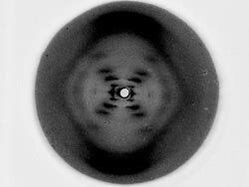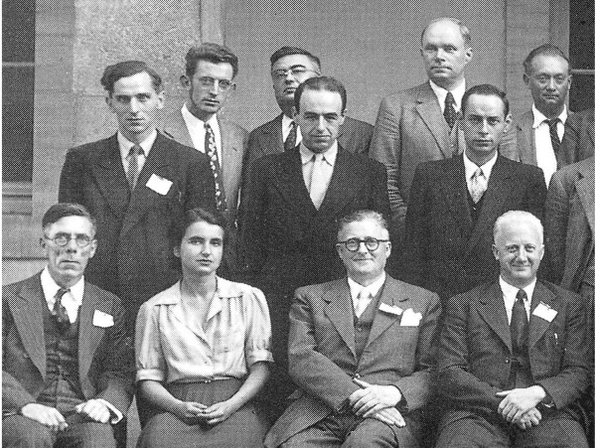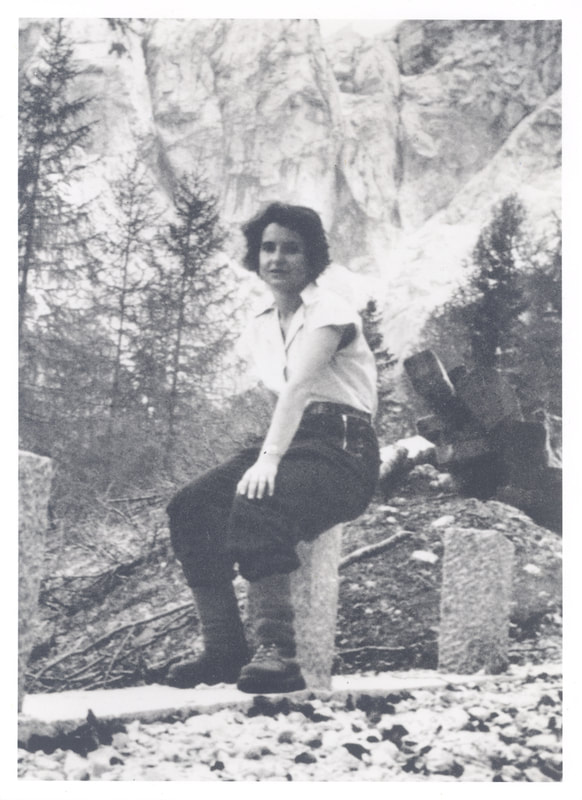Franklin and her cousin volunteered as air-raid wardens during this time. Their jobs involved making sure the 'blackouts' were observed adequately, serving two-hour shifts at the wardens' post, and going out in emergency situations. These were quite trying experiences for Franklin, as Jenifer Glynn, Franklin's sister, explained in her memoir: "Crossing Putney Common for her duties, at night during air raids, was a worse ordeal for Rosalind that we realized at the time--sometimes in the distress of her last illness it haunted her dreams." Franklin grew in prestige during her time working for BCURA. She worked on her research there for four years (ending in 1946). BCURA did research in coal, relating to the war. Franklin's studies, in particular, focused on tiny pores in coal. Franklin's research was a huge contribution to the study of coals. For example, in a quote Glynn included in her memoir, Peter Harris wrote in reference to Franklin's work: "This was probably the first demonstration of molecular sieve behaviour in any carbon. Today [2001], carbon molecular sieves are of great value in industry where, among other things, they are used to separate nitrogen from oxygen in air."* Franklin's research at BCURA involving the properties of coal, which I will expand more upon in the next post, became her dissertation for her Ph.D. (which she received from Cambridge in 1945) as well as several published scientific journal articles. * P. J. F. Harris (2001), 'Rosalind Franklin's work on coal, carbon and graphite', Interdisciplinary Science Reviews, 26, 204-10
4 Comments
Rosalind Franklin got her Bachelor's degree in Physical Chemistry in 1941. She didn't leave Cambridge until 1942, though. She had received a research grant and a scholarship for another year at Cambridge as a research student. She worked under Ronald Norrish who was the Professor of Physical Chemistry in the area of research on the kinetics of polymerization reactions. While he was an impressive scientist (in fact, he would go on to win a Nobel in 1967), he was often criticized for being a stubborn and inflexible professor to his students, especially the women. Franklin was frustrated with the work Norrish assigned her. She felt it didn't help the war effort and wasn't worth her time. She also disagreed with some of his conclusions. She was frustrated with his inattentiveness to her ideas. She was usually very direct and honest about her point of view, so she voiced these concerns to him. This, of course, often didn't bode well. Their two conflicting personalities and differing ideas often led to conflicts in their relationship. Franklin complained about him some of her letters. In a letter addressed to her family, written in December, she voiced her frustrations: I'm only just beginning to realise how well justified his bad reputation is. Well I've now got thoroughly on the wrong side of him, and almost reached a deadlock. He's the sort of person who likes you all right as long as you say yes to everything he says and agree with all his mis-statements, and I always refuse to do that. He tells me I mustn't take any step without asking him and has now run out of ideas and tells me to go back and try the first method again (after I proved three months ago that it didn't work). I refused, and we parted angry.... She cut her time as a research student at Cambridge short. While she could have stayed up to two or three years working there, she found the work not worthwhile enough for her and left in 1942. While she disliked her work during her time researching at Cambridge, she did enjoy her personal life. She lived alone -- and quite liked it, according to her letters home -- and enjoyed her independence. She liked reading, having visits from friends and family, and going to theaters and art exhibits according to her sister. When her college friends left Cambridge, though, she felt lonelier. In one melancholy letter home, she wrote: I live alone, and most of my friends have gone--all the friends that remain go down for good this month. I am intensely bored with my work, I despise my professor. I dislike the men who work in my lab, and they resent and generally ignore my presence. Franklin's friend Adrienne Weill came along and pulled her out of her loneliness. Adrienne Weill was a French Jewish refugee and scientist who came to Cambridge during Franklin's time at Newnham. She developed into Franklin's role model and friend. In May, Weill invited Franklin to stay at her house for foreign students. While at first hesitant, Franklin accepted and moved in in June. Also in June, the Ministry of Labour announced that women research students were now able to be 'drafted' into war related work. While her work at Cambridge was stable and could be considered war work, she decided to take a chance and look for different research work, more directly related to the war effort. This is how we come to the British Coal Utilisation Research Association (BCURA). BCURA offered Rosalind Franklin an opportunity to gain her Ph.D. while working for them. Franklin also disliked her research experience at Cambridge, so the benefits of switching to work at BCURA were obvious. However, Franklin was hesitant. Particularly, she wasn't too happy about the isolation of the lab, which would be several miles away from town. This would be a contrast to her current life living in Weill's international house. She also may have been disappointed in having to stop teaching. In the end she accepted BCURA's offer. And so, during the year 1942, she arrived at Kingston-on-Thames, right outside London, to work in coal research in the position of Assistant Research Officer in BCURA.
Rosalind Franklin grew a lot during her time at school. She became very vocal and serious about politics, as her sister describes in her memoir: "Her very full and frequent letters show her gradually maturing from her schoolgirl outlook, when she tended to echo her parents' beliefs (except in religion, which she had already firmly rejected), to her own outspoken left-wing independence." She would often write about politics in her letters while she was at Newnham. She was very vocal about issues at school, too, and would write about it to her family and sometimes criticisms to the school about their teaching. She was also unhappy about how the war was impacting her school, which she complained about in letters home. She wrote to her family about her complaints, politics, her schooling, exams, and interesting occurrences in day-to-day life. During war-time she would write about air-raids and other war-related events that were happening around her.
|
AuthorLoren Sinclair is a high school student interested in chemistry, art, computer science, theater, and everything else! They are writing this blog to tell Rosalind Franklin's often untold tale, from her life story to the science behind her work. Archives
January 2022
CategoriesSources |



